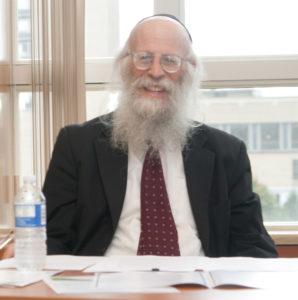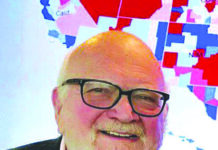
By Alan Rosen and Neal Lipsitz
The Full Moon According to the Western World
Since antiquity, we generally associate the full moon with trouble. Images of monsters, werewolves and vampires may come to mind. In fact, “lunar lunacy effect” is more to the point.
We tend to believe that the full moon causes a whole array of abnormal behaviors in both animals and in humans and escalates incidents of mental health crises, scary experiences, accidents, crimes, sleepless nights and more. Even quite rational people sometimes blame the full moon for what goes wrong.

In all fairness, the so-called “lunar effect” has been studied from both negative and positive perspectives. For example, does the full moon really aggravate mental illness? In contrast, does it increase the likelihood among pregnant women of giving birth? But studies that claim negative effects far outnumber those that find positive ones. It seems negative bias even influences research about the full moon.
Yet the moon in question is after all a full moon. Full usually means something good, something nice. So what if we could turn our negative view about the full moon on its head? What if we could replace it with something positive and good? Could the full moon actually be associated with joy and celebrations? But we don’t need to indulge in wishful thinking since this celebratory approach to the full moon has actually been with us for thousands of years!
Enter the Jewish calendar
Described as a luna-solar calendar, the Jewish calendar has some features that overlap with the Gregorian and others that are distinctive. It, too, is generally divided into 12 months, a lunar year usually numbering 354 days. The months always commence at the new moon (hence the lunar designation), last for 29 or 30 days, and bear names harking back to ancient Babylonia.
The moon thus plays a central role in the Jewish calendar. First, every month begins with the new moon. Second, a number of major and semi-major holidays take place at the full moon (which corresponds to the 15th day of the Jewish month). These holidays include Passover and Sukkoth, two of the three pilgrimage festivals; Purim; the “second Passover”; the new year of the trees (Tu B’Shevat); and Tu b’Av.
Thus, six times during the year festivals occur on a full moon. Moreover, even in those six months when a festival does not coincide with the full moon, the full moon is still considered to be the sign of good tidings. For Jews, the full moon is not only “not bad” but rather is a shining symbol of joy and celebration.
Five Full Moons, One After Another
With the approach of Passover, one of the main full moon holidays, we remember that we are presently in a Jewish leap year — with an extra (13th) month. So, lo and behold, the leap year adds even more luster to the already shining moon, since there are five months (Shevat through Iyar) in a row that feature a full moon that also coincides with a festive day.
Maybe now the full moon will finally be seen for what it is: full of joy, celebration — and light!
Avraham (Alan) Rosen is the project scholar and director for the Elie Wiesel Living Archive at the 92Y in New York City. Neal E. Lipsitz is the associate dean for student development and a lecturer in psychology at College of the Holy Cross in Worcester, Massachusetts.






